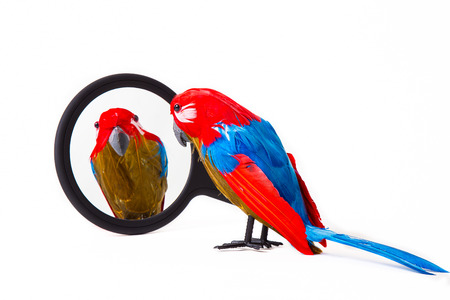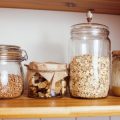Decoding Common Terms Found on Bird Food Labels
When you’re shopping for bird food at your local pet store or online, the labels can be confusing. Understanding what the common phrases mean helps you make better choices for your feathered friend’s health. Let’s break down some of the most frequent terms you’ll see on commercial bird feed packaging in the United States.
Common Bird Food Label Terms Explained
| Term | What It Means | What to Watch Out For |
|---|---|---|
| All-Natural | This means the ingredients come from natural sources, without synthetic additives. | There are no strict legal standards for “all-natural” in pet foods, so always read the ingredient list. |
| Fortified with Vitamins | The food has added vitamins and minerals to support your bird’s nutrition. | Check which vitamins are included and if they match your bird’s needs. |
| No Artificial Colors | The food doesn’t contain any synthetic dyes or colorings. | This is good for birds that may be sensitive to chemicals, but always check for other additives. |
| Complete Diet | The feed is designed to provide all essential nutrients in one mix. | This works best when it matches your bird’s species and life stage; supplement as needed with fresh foods. |
| Human-Grade Ingredients | The ingredients are safe enough for human consumption. | This can indicate higher quality, but it’s not a guarantee of balanced nutrition for birds. |
| Soy-Free/Corn-Free | The formula doesn’t include soy or corn products, which some birds may be sensitive to. | If your bird has allergies, these options can help avoid issues. |
Why These Terms Matter for Your Bird’s Health
Phrases like “all-natural” and “no artificial colors” appeal to owners who want wholesome options, but these claims aren’t always regulated by government agencies like the FDA or AAFCO when it comes to pet foods. That means manufacturers have flexibility in how they use these terms. Always check the full ingredient list and consider your bird’s specific nutritional requirements before choosing a product. If you’re unsure, ask your avian vet for recommendations tailored to your bird’s species and age.
2. Understanding Ingredient Lists and Order
Why the Ingredient List Matters
The ingredient list on bird food packaging tells you exactly what’s in the bag. Just like with human food, knowing how to read this list helps you make healthier choices for your pet bird. In the U.S., ingredients must be listed in order of weight, from highest to lowest. This means the first few items are the main components of the food.
How to Interpret the Ingredient Order
The order of ingredients is a big clue about the quality of commercial bird feed. If healthy grains or seeds are listed first, that’s usually a good sign. However, if you see fillers like corn or soybean meal at the top, it may mean the food is less nutritious. Here’s a quick guide:
| Ingredient Position | What It Means |
|---|---|
| First 1-3 Ingredients | Main nutrients; should be whole grains, seeds, or named protein sources (like sunflower seeds, oats, millet). |
| Middle Ingredients | Added vitamins, minerals, or dried fruits/veggies for extra nutrition. |
| Last Ingredients | Additives or preservatives; keep an eye out for artificial colors or flavors. |
Key Ingredients to Look For
- Whole Seeds and Grains: Sunflower seeds, millet, oats, safflower seed—these provide energy and nutrients.
- Dried Fruits and Vegetables: Add variety and essential vitamins.
- Named Protein Sources: Such as egg food or soy protein isolate; important for growth and feather health.
- Added Vitamins and Minerals: Ensure a balanced diet for your bird.
Ingredients to Avoid or Limit
- Artificial Colors and Flavors: These aren’t necessary and may cause allergies or hyperactivity.
- Sugar and Sweeteners: Birds don’t need added sugar in their diet.
- Excessive Fillers: Too much corn, wheat middlings, or soybean meal can mean less nutritional value.
- BHA/BHT (Preservatives): Some owners prefer natural preservatives like mixed tocopherols instead.
Tip: Always compare several brands side-by-side by reading their ingredient lists. Look for foods that have high-quality ingredients at the top of the list to give your bird the best possible nutrition!

3. Evaluating Nutritional Content for Different Bird Species
Understanding Essential Nutrients for Birds
Every bird species has unique dietary requirements, and understanding these needs is the first step to choosing the right commercial feed. The main nutrients to focus on are proteins, fats, fiber, vitamins, and minerals. For example, parrots need more fat and protein compared to finches, while canaries often require higher levels of certain vitamins.
Common Nutrient Requirements by Bird Type
| Bird Species | Protein (%) | Fat (%) | Fiber (%) | Special Notes |
|---|---|---|---|---|
| Parrots (e.g., African Grey, Macaw) | 12-18 | 6-15 | 5-8 | Needs Vitamin A and Calcium-rich diets |
| Canaries & Finches | 14-17 | 4-7 | 6-10 | Require more seeds and vitamin supplements |
| Cockatiels & Budgies | 12-14 | 4-6 | 5-8 | Avoid too many sunflower seeds (high fat) |
| Pigeons & Doves | 13-15 | 3-5 | 5-10 | Bigger grains and grit for digestion needed |
How to Read Guaranteed Analysis Information on Labels
The “Guaranteed Analysis” section on bird food packaging breaks down the basic nutritional makeup of the feed. Look for minimum and maximum percentages for crude protein, crude fat, crude fiber, moisture, and sometimes ash or calcium. Here’s what each means:
- Crude Protein: Essential for muscle growth and feather health.
- Crude Fat: Provides energy; important for active birds.
- Crude Fiber: Supports digestion but should not be too high.
- Moisture: Indicates water content; higher moisture can mean fresher ingredients but less shelf life.
- Ash: Represents total mineral content.
If you see extra vitamins (like A, D3, E) or minerals (such as calcium), this is usually a good sign that the feed is fortified for better health.
Selecting Feed Tailored to Your Bird’s Species and Needs
The best commercial bird feed matches both the general needs of your bird species and any special requirements your individual pet might have. Some feeds are designed specifically for breeding birds, young chicks, or senior birds. Always check if the formula is marked for “maintenance,” “growth,” or “breeding.” If your bird has unique needs—like molting support or specific allergies—look for specialized blends or consult with an avian vet for recommendations.
4. Identifying Additives, Preservatives, and Fillers
When choosing commercial bird food in the U.S., it’s important to know what goes into your feathered friend’s diet. Food labels often list ingredients you might not recognize at first glance. Let’s break down what additives, preservatives, and fillers are, why they’re used, and how to spot them on packaging.
What Are Additives and Preservatives?
Additives are substances added to bird food to enhance flavor, color, or texture. Preservatives help keep the food fresh for longer and prevent mold or spoilage. While some of these ingredients are safe in small amounts, others might not be ideal for your bird’s long-term health.
Common Additives and Preservatives in U.S. Bird Food
| Ingredient | Purpose | Safety Notes |
|---|---|---|
| BHA/BHT (Butylated Hydroxyanisole/Butylated Hydroxytoluene) | Preserves fats and oils | Generally recognized as safe in small amounts but best avoided if possible |
| Ethoxyquin | Prevents fat spoilage | Banned in human food; controversial for pets—choose alternatives when possible |
| Sugar (including corn syrup) | Adds sweetness | Not necessary for birds; can lead to obesity and other health issues |
| Artificial Colors (e.g., Red 40, Yellow 5) | Makes food look appealing | No nutritional value; may cause allergic reactions in sensitive birds |
| Tocopherols (Vitamin E) | Natural preservative | Safe and even beneficial as a source of vitamin E |
| Citric Acid/Ascorbic Acid (Vitamin C) | Prevents spoilage | Safe and commonly used natural preservative |
Understanding Fillers: What Should You Avoid?
Fillers are cheap ingredients added to bulk up bird food but offer little nutritional value. Common fillers include corn, wheat, soy, and peanut shells. While these may not directly harm your bird, they don’t provide the vitamins or minerals needed for optimal health. Look for foods where seeds, grains, fruits, or vegetables are listed before any fillers on the ingredient list.
How to Spot Excessive Fillers on Labels
- If corn or wheat is the first ingredient, the food is likely filler-heavy.
- Avoid foods with “by-product” meals or “animal digest.” These are vague terms that don’t guarantee quality nutrition.
- The shorter and more recognizable the ingredient list, the better it usually is for your bird.
- Choose brands that specify whole ingredients like “whole millet,” “sunflower seeds,” or “dried apples.”
Quick Tips for Choosing Quality Bird Food:
- Check for natural preservatives over artificial ones.
- Avoid artificial colors and flavors.
- Select foods with clear ingredient lists focused on whole foods.
- If in doubt, ask your local avian vet or pet store expert about unfamiliar ingredients.
5. Tips for Choosing the Best Feed from American Brands
Comparing Popular U.S. Bird Food Brands
When shopping for bird feed in the United States, you’ll notice several well-known brands on store shelves. Each brand may offer different blends and nutritional profiles. Here’s a quick comparison to help you get started:
| Brand | Main Features | Typical Ingredients | Special Certifications |
|---|---|---|---|
| KAYTEE | Wide variety, species-specific blends, easy to find in stores | Safflower, sunflower seeds, millet, corn | Non-GMO options, some USDA Organic products |
| ZuPreem | Pelleted diets, balanced formulas, vet recommended | Ground grains, fruits, vitamins & minerals | Made in USA, quality assurance testing |
| Lafebers | Natural ingredients, minimal preservatives, family-owned | Popped grains, real fruits, natural sweeteners | Non-GMO Project Verified, vet-formulated |
| Harrisons Bird Foods | Certified organic, whole food ingredients, no artificial colors/flavors | Organic grains, legumes, vegetables | USDA Organic Certified, Non-GMO Project Verified |
| Volkman Seed Factory | Freshly packed seeds and mixes, popular for parrots and finches | Mixed seeds (varies by blend), dried fruits/veggies | No artificial preservatives or flavors listed |
What Certifications Should You Look For?
Certain labels and certifications can give you peace of mind about the quality and safety of your bird’s food. Here are a few important ones to watch for:
| Certification/Label | What It Means for Bird Food Quality |
|---|---|
| USDA Organic Certified | No synthetic pesticides or fertilizers; meets strict government standards. |
| Non-GMO Project Verified | The product does not contain genetically modified organisms. |
| Aflatoxin Tested/Safe Levels Labeled | The feed is tested for harmful mold toxins that can affect birds’ health. |
| Made in USA or Locally Sourced Ingredients | You’re supporting local agriculture and reducing shipping times (fresher food). |
Nutritional Information on Labels: What Matters Most?
- Main Ingredients Listed First: Look for whole grains or seeds as the first ingredient rather than fillers like corn or wheat middlings.
- No Artificial Colors or Flavors: Natural diets are healthier and easier on your bird’s digestive system.
- Additives and Preservatives: Check for minimal use of chemical preservatives.
Extra Tips for Smart Shopping in the U.S.
- Date Codes: Always check “Best By” or “Use By” dates to ensure freshness.
- Batch Numbers and Recalls: Trust brands with clear batch numbers; this helps trace products if there are recalls.
- Customer Support: Good American brands often have websites or hotlines to answer questions about their products.
Selecting bird feed doesn’t have to be overwhelming—by comparing brands, looking for trustworthy certifications, and reading ingredient lists carefully, you’ll be able to choose a nutritious and safe commercial feed your feathered friend will love!


